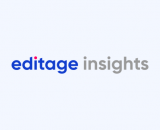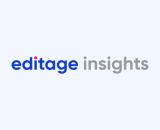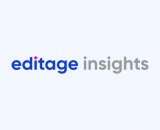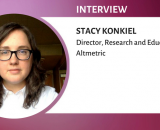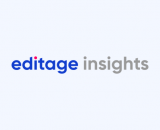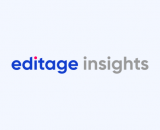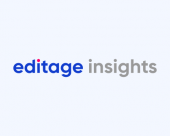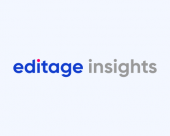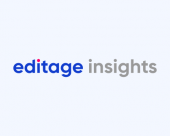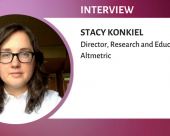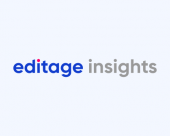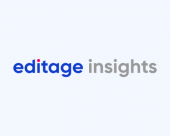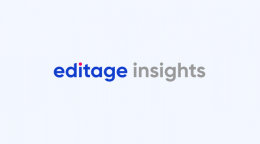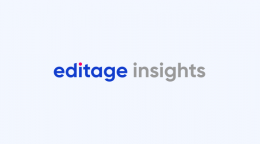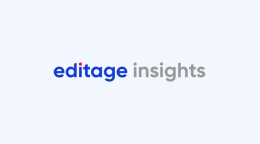The impact factor: For better or for worse
Impact factor
Impact factor, an index based on the frequency with which a journal's articles are cited in scientific publications, is the most widely used citation metric to evaluate the influence of published research and the prestige of researchers. However, the reliance on impact factor to assess a researcher’s worth has frequently been called into question. This enlightening series covers the buzz around the latest impact factor release, and delves deeper into interesting views such as: Why is it not enough to use the journal impact factor to evaluate research? What makes for good science? Can any other metrics replace impact factor?

Editage Insights works with ISMTE to bring great content to editors in the publishing industry. Once a month, Editage Insights shares the Editor's Choice article from ISMTE's member-only newsletter. Here's ISMTE's featured article for August, reproduced with permission.
The very words “Impact Factor” can send a shiver of fear through the spines of many journal editors as they contemplate the next number their journals will receive. Yet this measurement can be an aid to a journal if it is understood and treated with respect.
Background and Definitions
The IF is calculated by taking (1) the number of times all items published in Journal X over a two-year period (e.g., 2012 and 2013) are cited by other Web of Science–indexed publications in the following year (2014 in this case) and (2) the number of citable items published in Journal X in that same two-year period. Then the math is performed: 1 divided by 2. The resulting number is Journal X’s 2014 IF, which the journal will receive in 2015, usually in June. The IF is the average number of citations received by each article published during that particular two-year period.
The IF was first mentioned by Eugene Garfield in Science magazine in 1955. He had no idea at the time what a controversial and important measure it would become.1 In 1960, Garfield founded The Institute for Scientific Information (ISI), which was acquired by Thomson Scientific & Healthcare in 1992. ISI began to publish Journal Citation Reports (containing the IFs) in 1977 as part of the Science Citation Index. Thomson ISI is now part of Thomson Reuters, and their Web of Science® database service currently indexes more than 12,000 scholarly journals.2 Thomson Reuters recently branded their products to remove “ISI” from the names, although you might still hear people refer to them as ISI.
As editors, our experience has shown us that in spite of the stress involved in maintaining a competitive IF, most of us want our journals to be a part of the process for several reasons. For Editors-in-Chief, the IF is an extremely important and useful tool, demonstrating the quality of their work through citations. It shows the world how well they fulfilled the roles of gatekeepers in scientific publishing. For publishers, the IF is a quantifiable measure of how well the various journals under their umbrella are operating. For authors, having their work published by a journal with a high IF can enhance their career. For Managing Editors, it can indicate the health of the journal and whether the strategic mission is on track.
How Impact Factors Are Awarded
Criteria for Inclusion in Web of Science
Before a journal can be awarded an IF, it must be accepted for inclusion in one of the three separate indices of the Web of Science: Science Citation Index ExpandedTM, Social Sciences Citation Index®, or Arts & Humanities Citation Index®. General information on the journal selection process is available on the Thomson Reuters website, and a detailed explanation is provided in an article by James Testa,3 Vice President of Editorial Development and Publisher Relations at Thomson Reuters, whose insights are also captured in a Wiley Exchanges interview.4 To learn more about these procedures, one of the authors (D.B.) also spoke by phone with Mr. Testa earlier this year.
For all three of the Web of Science indices, journals are evaluated using the same criteria (citation rates, timeliness, international importance, English text, etc.), but the journal’s merits are evaluated according to the specific needs of each citation category. For example, citation rates in the hard sciences cannot be compared with citation rates in the humanities.3
Publications indexed in Web of Science are known for publishing “significant scholarly results,” based upon citation analysis.3 Although the number differs from year to year, thousands of journals apply for inclusion each year, hoping to be accepted and be able to reap this benefit of being well known and perceived. However, submitting a journal for evaluation for inclusion in the Web of Science requires thoughtful preparation. Thomson Reuters editors are constantly evaluating newly applied and currently indexed journals, with journals being added to and deleted from Web of Science throughout the year. The nine editors who determine which new applicants are accepted for indexing and eventually for receiving an IF are experts in the literature of the fields that they manage, and many have educational backgrounds in those fields.3 According to Testa (personal communication), the Thomson Reuters editorial staff now reviews about 3,000 journal titles a year for inclusion in Web of Science. In 2012, around 10% to 12% of the journals that were evaluated were accepted for coverage.3
Applying for Inclusion in Web of Science
The intense competition for inclusion in Web of Science makes it crucial that anyone submitting their journal for consideration thoroughly understands the process. The Web of Science is reserved primarily for journals with peer-reviewed original research and reviews of literature (Testa, personal communication).
The application should include a letter with the journal name, the editors’ names, the publishing aims, and the scope, as well as the major selling points of the journal.5 Thomson Reuters will examine three consecutive issues of the journal, but will not look at retrospective issues. According to Testa (personal communication), the journal should have something new to say, have a specific focus, have a unique market, and have enough submissions to allow timely publication.
One of the most important criteria for evaluation is timeliness. The journal must be publishing according to its reported publication schedule. The other major criterion is citation potential. Thomson Reuters editors will need to establish whether the journal’s content will be cited at an appropriate level for the field and analyze the relationship to other journals in the field that are included in the index.3
Citation analysis takes place on at least two levels. Thomson Reuters looks for citations to the journal itself, as expressed by IF and/or total citations received. For new journals that do not yet have a citation history at the publication level, analysts examine the citation record of the contributing authors and Editorial Board members. This allows them to see whether the journal is able to attract contributions from scholars whose prior work has been useful to the research community.
As Testa explained,4 the full evaluation includes review of the journal’s publishing standards (timeliness, accessible content, English language, peer review), editorial content (novel content, comparison to competitors), international diversity (authors, editors, Editorial Board representing an international community), and citation analysis. According to Testa, the support of a prestigious society does factor into a journal’s evaluation, but the journal must meet the above criteria for inclusion. Lobbying for inclusion will not benefit the application.4
Information on how to prepare a journal to be successfully evaluated can be found in Table 1. The journal must consistently meet the requirements listed in Table 1 to be accepted. The journal’s publisher can be an important asset in this process because they have had experience submitting journals for evaluation. Access to resources, including a subscription to the Web of Science service, can help increase your chances for success. Thomson Reuters accepts applications throughout the year; submission information can be found in Box 1.
If you apply and your journal is rejected, you have to wait two years before you can reapply. If you apply again after two years and the journal is rejected again, you cannot reapply for another four years. Testa noted in our conversation that after the next rejection, you have to wait eight years, after which you cannot reapply.
Improving Your Journal’s Impact Factor
Putting the Journal First
Once a journal has an IF, most editors are keen to see it improve. In our conversation with James Testa, he advised us to worry less about how to improve the IF and to think instead about how to improve the journal. If you succeed in that, a higher IF will follow. When asked what the benefit of a high IF is to a journal, Testa emphasized that editors should not think of the IF itself as a benefit. Instead, the IF is a tool for measuring whether editors have been successful in building a better-quality journal; that is, the benefit is the journal itself. One might say that praising a strong IF is like taking your temperature with a thermometer, finding that you have no fever, and then praising the great thermometer instead of being happy about your healthy body.
The Role of the Editorial Office
One way to improve a journal is to have good guidelines, policies, and procedures. In an editorial published in the journal Epidemiology, the authors wrote:
Most major epidemiology journals, including ours, have seen a steady rise in their impact factors during recent years. At the same time, the relative rank of these journals changes from year to year. Such changes are unlikely to represent true annual changes in these journals’ relative quality. We think the various epidemiology journals are indeed different, and they deserve to be evaluated and compared. But we’re happier when such assessments are based on matters of substance, such as editorial policies, quality of reviews, quality of editing, efficiency in the processing of manuscripts, and the (real) impact of the journal on the field.6
A number one journal in its field should prefer good policies, quality, efficiency, and “real” impact of their journal to a good “impact factor.” Consider, though, that this might perfectly illustrate a chicken-and-egg situation. How important is it to develop such important aspects of a journal to become the best in the field? Which comes first—quality or a high IF? Most institutions and businesses develop and put policies and standard operating procedures (SOPs) in place as a means of quality control: For example, as explained in the University of Minnesota’s Administrative Policy, the reason for policies is that “[t]he required process by which the policies are developed, reviewed, and maintained promotes consistency, efficiency, and transparency and reflects best practice in higher education.”7 Furthermore, successful businesses and research labs alike use SOPs, defined by an online business dictionary as the “written procedures prescribed for repetitive use as a practice, in accordance with agreed upon specifications aimed at obtaining a desired outcome,”8 to ensure a consistent outcome of their production processes and experiments.
The basis for efficiency, reproducibility, and improvement lies in keeping good records. An Australian government document cites several benefits of good records, including that they “help you work more efficiently, enable you to meet legal obligations applicable to your work, … enable review of processes and decisions, …help research and development activities, [and] enable consistency and continuity in your business.”9 Indeed, our authors—scientists and scholars—rely on such practices as keeping lab notebooks and recording research data.
Although the process of peer review is in flux as never before, it still represents the gold standard for developing trust in the results of published scientific and scholarly research (see Irene Hames’ recent presentation, “Future of Peer Review,” for further information10).
At another level, developing loyalty (among authors and reviewers) and trust (in the peer review process) would seem to play important roles in establishing a good reputation and achieving high impact of a journal. In the business context, John Mehrmann outlined six objectives for building customer loyalty, five of which are of special importance in publishing11:
1. If you want loyalty, you have to give it
2. Communicate
3. Understand your customer’s goals
4. Be consistent
5. Build credibility
Like scientists, who work with a well-designed experimental protocol, good SOPs, and well-kept records, Editorial Offices should have clear instructions and well-formulated policies, standardized procedures, and consistent records and reports to provide the breeding ground for growth and reproducible results (i.e., more and higher-quality submissions). At the same time, showing loyalty to authors and reviewers and running a clean and timely peer-review process (i.e., one that is transparent and ethical) will help to build a good reputation and, ultimately, produce better publications in a journal.
An essential part of implementing and maintaining good procedures is, of course, to revisit them regularly to ensure they are running efficiently and effectively. According to Hames,12 “All policy decisions, especially those that may have far-reaching and long-term consequences for the journal, should be based on reality and not on perception.” This underscores the importance of good follow-up and reports for establishing and monitoring policies.
The simplest way to ensure timely publication is to have loyal authors and reviewers, clear procedures, and good SOPs that follow international editorial conventions for a steady flow of manuscripts that are processed in a standardized and consistent manner. Policies concerning funding and any associated conflicts of interest that are formulated and adhered to will not only promote transparency in the publication process but also reassure customers of a journal’s credibility, which builds author and reviewer loyalty. Clean peer review will guarantee scientific quality and close the circle for continued improvement.
Impact Factor Uses and Abuses
Testa noted that a common misuse of the IF is that people, including research institutions and universities, sometimes think of it as a way to measure a single author or single article.3 In truth, though, the author may or may not have had any effect on the IF for that journal. Despite this, academic careers in some European countries depend on IF-based criteria. For example, the Czech criteria for professorship include articles published in journals that have an IF and rank highest (calculated using a point system based on the IF of the journal), followed by peer-reviewed but “nonimpacted” articles, book chapters, local peerreviewed journals, conference abstracts, etc. At Czech and Slovak universities, there is a requirement for 10 to 15 IF articles and certain numbers of citations, which may differ among universities. Professorship candidates have to add the journal IF to each article in their list of publications wherever it is available, and provide a complete list of citations to their articles. Because of similar practices, the IF has become almost a curse word among scientists and editors in many European countries. Due to extreme pressures to publish in journals with an IF, some authors engage in various forms of academic misconduct, such as including people in the list of authors who were not engaged in the study at all. European journals with lower IFs than those in the United States suffer from the tendency of authors to publish in US or Canadian journals, and numerous individual scientists tend to favor American-oriented projects.13
The uses (and abuses) of the IF are diverse. For example, in the Czech Republic, an annual evaluation system records the output of scientific research funded by grant agencies in the country. Research articles are evaluated by the IF ranking (i.e., importance) of the journals in which they appear, using a sophisticated system to assign “points” to publications according to the IFs of the respective journals. Among other types of publications, book chapters can get some points, and peer-reviewed articles in non-IF journals obtain a minimum number of points in this system. One of the results of such pressures is that local professional journals for practitioners obtain fewer articles written by people employed at universities, and some of these journals survive only with difficulty. Academics need “papers with points” for their grant applications and career advancement. Grant applications in which the authors present their articles published in journals with an IF that is not high enough are not even considered by the panels of experts. Therefore, taken to absurdity, if someone presented a brilliant, totally innovative research idea with no support in previous publications, s/he would have no chance of obtaining a grant in this system. However, as Tim Hunt, a 2001 Nobel Laureate, said at the 2014 EASE (European Association of Science Editors) conference in Split, “Discoveries cannot be planned; they just occur.”
One way that authors sometimes play with the IF is by presenting the cumulative IF with final grant reports. These authors simply add up the IFs of all articles resulting from a particular grant to produce a proud IF of 75 or so. Some European scientists present their own cumulative IFs in their curriculum vitae. One may wonder what this number says about the real importance of the research project—how did it contribute to the advancement of science? How much taxpayers’ money has been saved by using the new knowledge in practice? What new measures to promote human or animal health have been introduced? What new procedure was developed to cultivate rice or quinoa that will feed millions of people?
Similarly, some editors are chasing IFs and doing unethical things just to inflate the IF of their journals. For example, they may accept a manuscript only if its authors agree to cite other papers published in that journal, a practice known as coercive citation14 or excessive self-citation. Testa pointed out (personal communication) that another abuse is what Thomson Reuters calls a “citation cartel.” This occurs when two or more journals within the same specialty agree to cite each other’s articles with increased frequency. These practices, Testa said, render the IF meaningless. The IF is meant to measure a journal’s relationship within the literature of that field. If it is affected only by its relationship with one other journal, then its usefulness is lessened. Thomson Reuters is well aware of these “tricks,” and when they catch a journal practicing any of them, they will likely suppress that journal’s IF, typically for two years. The company used to drop the journal from Web of Science, but have since decided against that procedure. Now they let the publisher know the rationale and then they suppress the IF. The publisher can protest; however, in practice, by the point that Thomson Reuters moves to suppress an IF, their editors have spent so much time checking the data that they have never had to reverse their decision.
Such developments are somewhat comical in light of the findings by Golubic et al,15 who discovered that a significant number of citations to items in Nature are not to original scientific articles but to letters, comments, or editorials, which in 2004 constituted 63% of the 5,193 items published. However surprising this finding may be, letters and comments often present interesting views and innovative ideas that attract citations.
Without doubt, scientific publishing has changed over the years, partially due to IF pressures that the authors perceive. For example, in the early 1970s, at the international scientific journals Acta Veterinaria Brno and Veterinarni Medicina, manuscripts were rarely rejected. Authors asked important questions, prepared their articles well, had the references meticulously collected and accurately written (with no access to the search engines of today), and presented a sound contribution to scientific knowledge. However, since the early 2000s, probably due to increasing career pressures, unethical behaviors such as plagiarism or attempted duplicate publication have occurred with increasing frequency and, at present, a large number of submissions have to be rejected for various reasons: lack of novelty, no hypothesis, careless preparation, trivial results, or inaccurate and missing references.
The IF is an essential tool for evaluation of journals. There is general agreement among scientists (less so among the science-evaluating bodies) that it just cannot be the sole source to be considered when grant projects and institutions or scientists are evaluated. Scientists are becoming more and more vocal in their criticism of the IF. A beautiful succinct one-page statement was recently published in Nature, in which the author writes, “When we believe that we will be judged by silly criteria, we will adapt and behave in silly ways.”16
What, then, should be asked of authors and editors if we want our journals to have strong IFs? What would a positive role model for a growing IF look like?
Advice for Authors
“We have to realize that journals have a good IF because they bring good science as a result of meticulous work of editors and reviewers who help to pick and improve the good articles, and not vice versa, i.e., not that an article is good because it was accepted in a journal with a high IF.”17 Authors should view the IF with this idea in mind. For a manuscript to be picked by an editor, it has to be based on broad critical reading and thinking, have a solid hypothesis, and a question whose answer will matter; in addition, authors should be open to improving the manuscript based on comments of knowledgeable reviewers.
Above all, authors write to be read18; this simple statement is the essence of the art in science. Authors write not for citations, but because they want to communicate what they have found, and they should communicate it well. Excellent resources exist that explain how authors should prepare a good manuscript for submission to a scholarly journal.
Good research questions and “schools of science” can only be generated in a stimulating working atmosphere and under a wise leadership. This can have a profound effect on manuscript quality (and thus potentially a stronger IF), as shown recently by Berka et al.19 They found, for example, positive correlations between communication methods among team members, conference presentations, team diversity, recommendations of reviewers, and manuscript quality. In a small research team of two to four members, face-toface communication during the research project proved to be the most efficient. If necessary, this can take the form of phone calls, internet-based audio or video conferences, or email messages. These data indicate that people responsible for the advancement of science, for example, directors and professors, should invest energy in team building at an appropriate stage of research projects. A good team with strong communication can take the first step toward producing effective manuscripts that help to ensure that there is no waste in the publishing system described by Shashok.20 The need for institution leaders with visions for future needs and sound research projects is even more obvious in light of these findings.
Advice for Editors
For editors, the IF is an important and useful tool, showing the quality of their work based on the frequency of citations of their journal’s articles. Editors want their journals to be of high quality. As a side benefit, this also improves the IF. Since most editors are hired and paid by publishing houses, the commercial aspect of IFs is important as well. Editors whose journals have not yet received an IF can do much to make their journal more attractive by educating authors to publish more innovative research. Journals from all over the world, namely African and South American journals as well as those from Asian countries, should apply for acceptance into the appropriate index. More journal diversity is desirable, for example, in such specialized fields as ethnography, linguistics, architecture, and history. Editors worldwide should improve their journals continuously, and by having them included in Thomson Reuter’s databases (and obtaining an IF), they will eventually succeed in bringing much more diversity and recognition of science from all over the world into the system. Clearly, different cultures and traditions should be respected in science as well. To paraphrase Zetterström,13 scientific work has to be distributed worldwide to preserve the diversity of scientific progress.
It Is a New World
Without question, the publishing industry has changed dramatically in recent years. How have these changes affected the IF?
Online-Early Articles
Many journals today publish online-early articles, with the article posted online as soon as the copyedited and typeset version is ready (or, for some journals, as soon as the article is accepted) and then included later as part of an issue. The article can be cited as soon as it is published online. But what if the article is published online-early in one year and again as part of an issue, either online or in print, in the following year? How does that affect the IF calculation?
James Testa explained (personal communication) that Thomson Reuters prefers the simplicity that occurs when an article is published online-early and within an issue in the same year. However, when that does not happen, the date that Thomson Reuters counts in the numerator of the IF calculation (the number of citations) is whichever date the citing authors have used in their reference list. For example, if article X was published online-early in December 2013 and is published in that journal’s January 2014 issue, and if article Y cites the 2013 online-early publication in their reference list, that is the date Thomson Reuters will count. If article Y cites the 2014 article from the January issue, Thomson Reuters will add the citation to the 2014 number.
Online-Only Journals
Not so long ago, “journal” meant articles printed on paper and bound. That is not necessarily true anymore. According to information available at the Thomson Reuters website, journals that do not publish in print at all can have an IF.3 The components that Thomson Reuters editors are looking for, which are discussed earlier in this article, have nothing to do with the method of delivery.
Social Media
In 2007, Chew et al21 asked the editors of several prominent medical journals how a journal’s IF could be improved. One of the answers was to boost the journal’s media profile. Testa revealed (personal communication) that at the time that the article was published, that statement did not make him think of social media—instead, he thought that meant sending emails to colleagues to let them know about the article. Now, though, with Facebook, Twitter, LinkedIn, blogs, etc., boosting articles via social media can truly affect a journal’s IF. The more you can make other researchers aware of an article published in your journal, the more citations it is likely to obtain. However, what Thomson Reuters is seeing is that social media has become the norm. Most journals are doing this and so, as Testa pointed out, “a rising tide floats all boats.” The number of citations is rising across the board and, along with that, the IFs are rising. However, in countries with a very high human development index, such as the United States and the United Kingdom, Jamali et al have argued that social media information and “likes” are merely indicators of popularity, not of credibility and quality of scientific work.22
Conclusion
The influence and importance of the IF are undeniable. Benjamin Franklin said, “Without continual growth and progress, such words as improvement, achievement, and success have no meaning.”23 So, too, should editors strive for continual growth and progress for their individual journals. If we achieve that, the Impact Factor will follow.
Acknowledgments
We would like to acknowledge Joan Marsh, President of the European Association of Science Editors, for commenting on a draft of this article.
Table 1. Guidelines for preparing your journal for submission to TR to be evaluated for WoS inclusion.
| Steps | Process | Considerations |
| Establish timeliness. Submit a minimum of 3 consecutive current issues of the journal. |
Submit issues one at a time, as they are published, so the TR editor considering your application can see the journal is publishing on time according to its stated schedule. Format can be print and/or online (for online journals that are not issue based, the editor looks for a steady flow of articles over a 9-month period). The total number of published articles during this time frame should be appropriate for the journal’s WoS category. Issues should be sent until the evaluation process is concluded. |
These issues provide the TR editor with the journal content as well as establishing |
| Establish international editorial conventions |
Ensure journal content is retrievable. TR editors will evaluate whether the journal content has informative journal titles, fully descriptive article titles and author abstracts, complete bibliographic information for all cited references, and full address information for every author |
This information should be published in English. |
| Publish the full text of the content in English. |
Publish the full text of the articles in English to serve an international research community. Some exceptions apply, but all bibliographic and reference information should be published in English. |
|
| Establish the journal has a peer-review process |
Provide information on the journal’s peer-review process, which indicates overall quality | |
| Include funding acknowledgements for all articles. |
Some publishers feel including funding acknowledgments can be a deciding factor for STM journals |
|
| Establish need for your editorial content. | Review the other journals in your field that are already indexed in WoS. Your journal’s content should enrich the database. |
TR will not add a journal if the content is already adequately covered in the index. |
| Establish international diversity |
Invite authors, editors, and Editorial Board members who represent the international community. Content should enrich coverage of a topic or provide an important regional perspective. |
TR does include a small number of regional journals each year that target local audiences. |
| Establish citations for analysis. | For new journals, bring in an editor and Editorial Board who are well cited themselves. Invite papers from well-cited authors. Ask the board members to write for the inaugural issues and invite their colleagues to write, too. Use press releases to raise the profile of the journal, which may raise highly cited authors’ interest in submitting to a journal that does not yet have an IF. |
Self-citation rates are analyzed by the TR editors. Ensure these are within acceptable parameters (see Testa). |
| Provide registered ISSN | Both the electronic and print ISSNs will be required, if applicable. |
References
1. Garfield E. The agony and the ecstasy—the history and meaning of the journal impact factor. http://garfield.library.upenn.edu/papers/jifchicago2005.pdf Accessed March 14, 2015.
2. Institute for Scientific Information. https://en.wikipedia.org/wiki/Institute_for_Scientific_Information. Accessed March 14, 2015.
3. Testa J. The Thomson Reuters journal selection process. http://wokinfo.com/essays/journal-selection-process/. Accessed March 5, 2015.
4. Nicholson D. (2011, February 20). Your starter for ten: an interview with Jim Testa, VP Editorial Development. http://exchanges.wiley.com/blog/2011/02/20/your-starter-for-ten-an-interview-with-jim-testa-vp-editorial-development-and-publisher-relations-at-thompson-reuters-isi-web-of-science/. Accessed March 9, 2015.
5. Thomson Reuters. http://thomsonreuters.com/en/products-services/scholarly-scientific-research/scholarly-search-and-discovery/web-of-science.html. Accessed March 14, 2015.
6. Hernán MA, Wilcox AJ. We are number one but nobody cares—that’s good. Epidemiology. 2012;23(4):509. CrossRef
7. The University of Minnesota Administrative Policy. http://policy.umn.edu/Policies/Operations/Compliance/UPOLICY.html.
8. Business Dictionary. http://www.businessdictionary.com/definition/standard-operating-procedure-SOP..html.
9. Record-keeping guidelines. http://www.ombudsman.wa.gov.au/Publications/Documents/guidelines/Good-record-keeping-Guidelines.pdf.
10. Hames I. The future of peer review. http://www.ease.org.uk/sites/default/files/irene_hames_the_future_of_peer_review_september_2013.pdf. Accessed April 25, 2015.
11. Mehrmann J. Building customer loyalty. http://ezinearticles.com/?Building-Customer-Loyalty&id=329074. Accessed April 25, 2015.
12. Hames I. Peer Review and Manuscript Management in Scientific Journals. Oxford, England: Blackwell; 2007. P. 17.
13. Zetterström R. Bibliometric data: a disaster for many non-American biomedical journals. Acta Paediatr. 2001;91(10):1020–1024. CrossRef
14. Martin BR. Whither research integrity? Plagiarism, self-plagiarism and coercive citation in an age of research assessment. Res Policy. 2013;42(5): 1005–1014. CrossRef
15. Golubic R, Rudes M, Kovacic N, Marusic M, Marusic A. Calculating impact factor: how bibliographical classification of journal items affects the impact factor of large and small journals. Sci Eng Ethics. 2007;14(1):41–49. CrossRef
16. Werner R. The focus on bibliometrics makes papers less useful. Nature. 2015;517(7534):245. CrossRef
17. Špála M. Impakt factor—dobrý sluha, ale špatný pán [Impact factor—a good servant but a bad master]. Cas Lek Cesk. 2006;145(1):69–78.
18. Sterken C. Writing a scientific paper: the writing process. In: Sterken C, ed. Scientific Writing for Young Astronomers - Part 1. EAS Publication Series; 2011;50:1–63.
19. Berka G, Olien J, Rogelberg SG, Rupp DE, Thornton MA. An inductive exploration of manuscript quality and publication success in small research teams. J Business Psychol. 2014;29(4):725–731. CrossRef
20. Shashok K. Author’s editors in the 21st century: promoters of publication quality and efficiency. Eur Sci Editing. 2014;40:60–62.
21. Chew M, Villanueva EV, Van Der Weyden MB. Life and times of the impact factor: retrospective analysis of trends for seven medical journals (1994–2005) and their Editors’ views. J R Soc Med. 2007;100:142–50.
22. Jamali HR, Nicholas D, Watkinson A, et al. How scholars implement trust in their reading, citing and publishing activities: geographical differences. Libr Info Sci Res. 2015;36:192–202.
23. Wisdom quotes. http://www.wisdomquotes.com/quote/benjamin-franklin-16.html. Accessed April 25, 2015.
Comments
You're looking to give wings to your academic career and publication journey. We like that!
Why don't we give you complete access! Create a free account and get unlimited access to all resources & a vibrant researcher community.

Subscribe to Journal Selection



